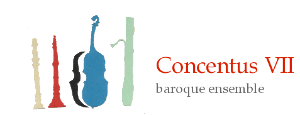I first encountered Telemann through his solo Fantasias aged about 15 and now teach them to my own teen-aged students. They play them a minor third higher but when I play them now I mostly use a voice flute to play them in the original flute versions, keeping the sense of key which was an important aspect of rhetoric and used to great effect Baroque era. It’s a pleasure to explore the colours of dance movements and folk inspired extracts as students begin to get beyond the notes.
Over the years I have enjoyed performing Telemann’s Cantatas, Sonatas and other works in many combinations, not forgetting the pastoral tour de force, the Concerto for two Chaumeaux.
Telemann’s use of the high register of the recorder is unrivalled and provides a neat solution to the inherent problems balance between the recorder and the naturally stronger baroque oboe. I am lucky enough to have a Denner copy alto made by Von Huene workshop with a perfect clear high register. When we recorded the Telemann Trio Sonata in A minor in 2009 we were blown away by the sound of the intense slow movement with its interlocking oboe and recorder lines in the atmospheric venue of Toddington Church.
@Louise Strickland

